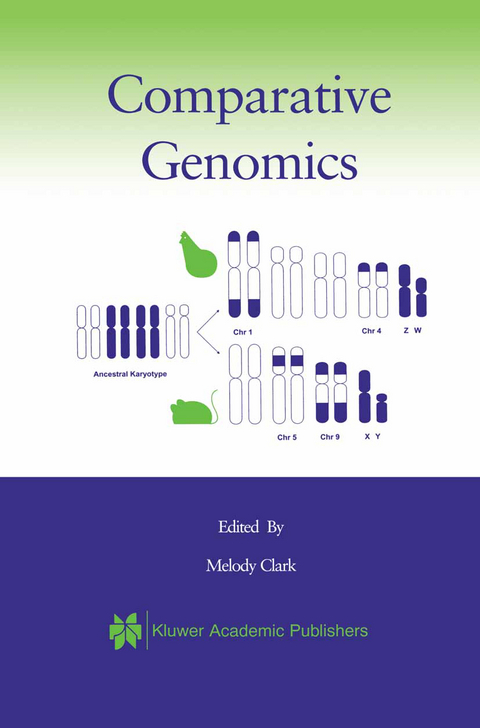
Comparative Genomics
Seiten
2000
|
2000 ed.
Chapman and Hall (Verlag)
978-0-412-83080-8 (ISBN)
Chapman and Hall (Verlag)
978-0-412-83080-8 (ISBN)
This work covers such topics as identifying novel genes and determining gene function, control sequences, and developmental switches. The book aims to demonstrate how different approaches taken with model organisms will aid in our understanding of the results coming out of the Human Genome Project.
Since the advent of the Human Genome Project, an increasing number of disease-causing genes have been discovered and, in some cases, genetic tests developed. However, this is only the first step. The second, much larger phase is the analysis of the total sequence. What does the rest of the DNA do? The answer to this question will be determined by computer prediction, expression profiling, and comparative genome analysis.
Comparative Genomics covers such topics as identifying novel genes, determining gene function, control sequences, and developmental switches. The book aims to demonstrate how different approaches taken with model organisms, such as mutation studies, expression profiling of cDNAs, in situ localization of message and comparative genome analysis (both at the gene and nucleotide level) will aid in our understanding of the results coming out of the Human Genome Project and contribute significantly to our understanding of how genes function.
Since the advent of the Human Genome Project, an increasing number of disease-causing genes have been discovered and, in some cases, genetic tests developed. However, this is only the first step. The second, much larger phase is the analysis of the total sequence. What does the rest of the DNA do? The answer to this question will be determined by computer prediction, expression profiling, and comparative genome analysis.
Comparative Genomics covers such topics as identifying novel genes, determining gene function, control sequences, and developmental switches. The book aims to demonstrate how different approaches taken with model organisms, such as mutation studies, expression profiling of cDNAs, in situ localization of message and comparative genome analysis (both at the gene and nucleotide level) will aid in our understanding of the results coming out of the Human Genome Project and contribute significantly to our understanding of how genes function.
1. Comparative genomics: An introduction: sequencing projects and model organisms..- 2. Drosophila melanogaster: A genetic tool.- 3. Tunicates: Models for chordate evolution and development at low genomic complexity..- 4. Fugu rubripes: A fish model genome.- 5. The mouse and the genomic era.- 6. Quantitative Trait Loci in domestic animals — Complex inheritance patterns..- 7. Comparative genomics of vertebrates and the evolution of sex chromosomes..- 8. Insights into mammalian genome organization evolution by molecular cytogenetics..
| Zusatzinfo | VIII, 246 p. |
|---|---|
| Verlagsort | London |
| Sprache | englisch |
| Maße | 155 x 235 mm |
| Themenwelt | Informatik ► Weitere Themen ► Bioinformatik |
| Medizin / Pharmazie ► Medizinische Fachgebiete | |
| Studium ► 2. Studienabschnitt (Klinik) ► Humangenetik | |
| Naturwissenschaften ► Biologie ► Genetik / Molekularbiologie | |
| ISBN-10 | 0-412-83080-9 / 0412830809 |
| ISBN-13 | 978-0-412-83080-8 / 9780412830808 |
| Zustand | Neuware |
| Haben Sie eine Frage zum Produkt? |
Mehr entdecken
aus dem Bereich
aus dem Bereich
Grundlagen, Algorithmen, Anwendungen
Buch | Hardcover (2022)
Wiley-VCH (Verlag)
79,90 €
Nicht nur ein Ratgeber zum effektiven Computereinsatz
Buch | Softcover (2021)
Lehmanns Media (Verlag)
14,95 €


